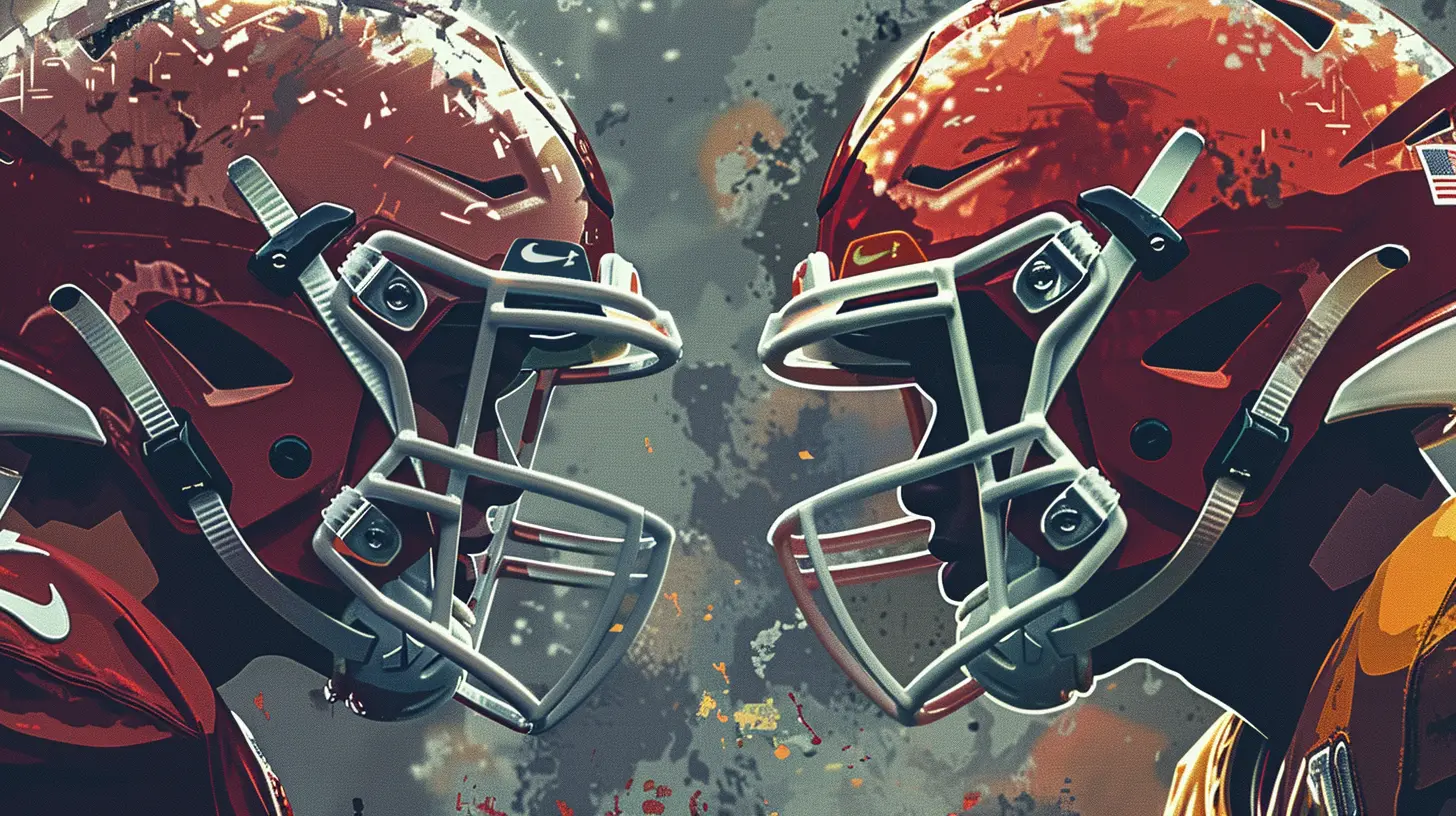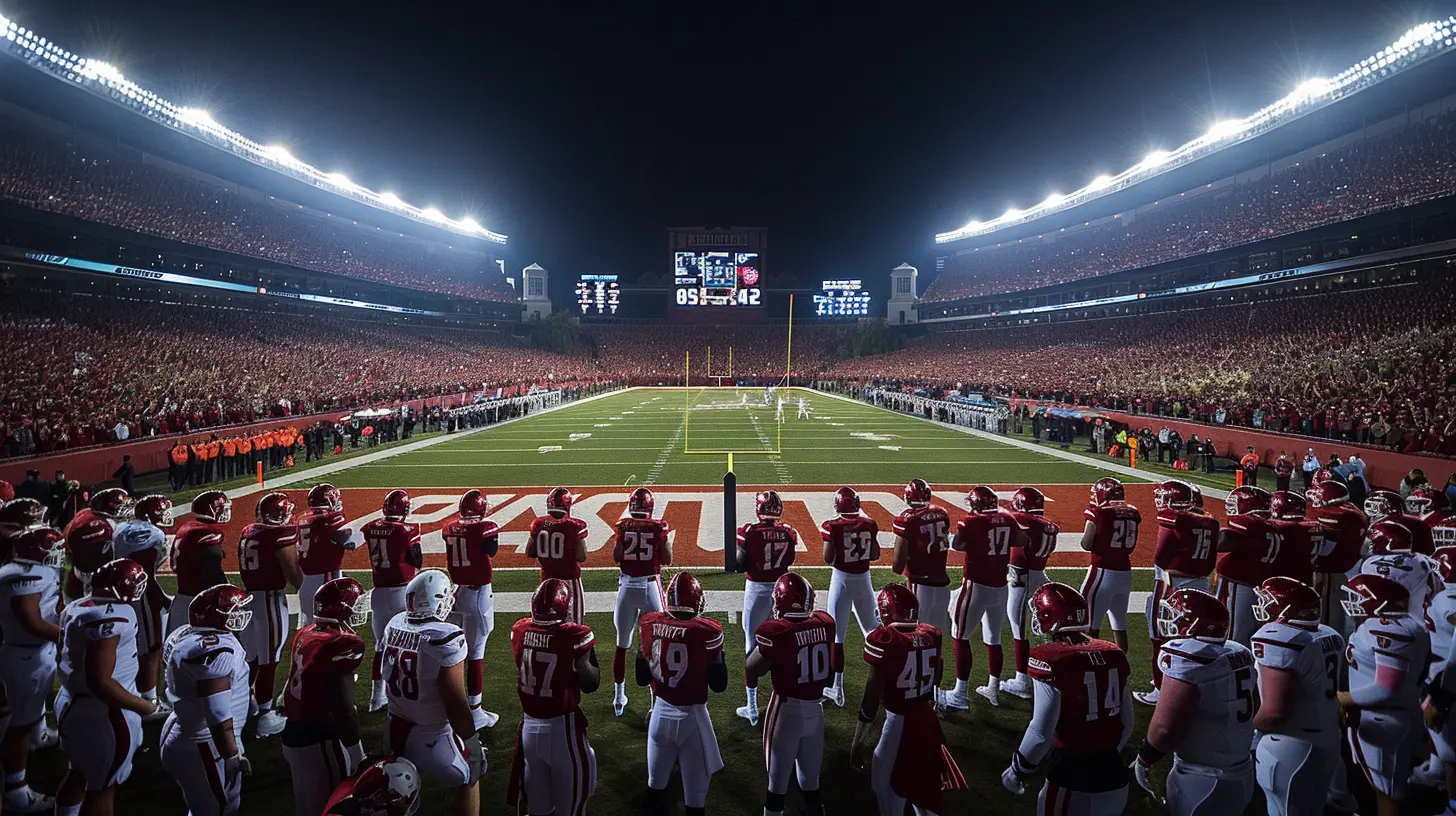Breaking Down Rivalries: Why Some College Matchups Are Legendary
25 June 2025
When it comes to sports—college sports especially—few things get hearts racing like a good, old-fashioned rivalry. Whether it's the tension in the locker room, the roar of the fans, or the deep-rooted animosity between two teams, rivalries are the lifeblood of college athletics. But what makes some matchups so iconic that they become traditions passed down through generations? Let’s break it all down.

What Exactly Makes a Rivalry?
Before we dive into the legends, let’s answer a simple question—what even counts as a rival? It’s not just about geography or playing each other a lot. Rivalries are born out of history, passion, pride, and sometimes even a little bitterness.A true rivalry is like a smoldering fire that never quite goes out. It’s always there, waiting for the next game to reignite the flames. These matchups often carry emotional baggage—maybe a controversial play from years ago, a coach who jumped ship, or a championship stolen in the final seconds. Sound familiar?

The Emotional Hook: Why Rivalries Hit So Hard
College rivalries go beyond X’s and O’s. They're personal. Think about it—these players aren't just wearing any jersey. They're representing their school, their town, maybe even their family's alma mater. You've got fans who’d rather miss Thanksgiving dinner than miss the "big game."Then there’s the fact that college is a defining chapter in many people’s lives. The team you root for during those four years? That’s usually the team you stick with for life. So when your school goes head-to-head with its arch-nemesis, you're not just watching a game—you're defending your honor.

A Look at the Legends: Famous College Rivalries That Define the Game
Some rivalries are just bigger, louder, and more dramatic than others. Here's a breakdown of some legendary matchups that have stood the test of time.1. Ohio State vs. Michigan – The Game
When people talk about college football’s greatest rivalry, this one almost always tops the list. Known simply as “The Game,” the Ohio State-Michigan clash is more than a century old, dating back to 1897.What makes it so intense? For starters, both schools are powerhouses. They're often competing for the Big Ten title, national playoff spots, and the right to brag for 364 days a year. Every year, fans mark their calendars for this one, no matter what their teams' records are.
The rivalry has seen insane moments—last-second field goals, undefeated streaks, even controversial calls that fans still argue about years later.
2. Duke vs. North Carolina – Tobacco Road Showdown
Switching over to the hardwood, Duke vs. UNC might just be the most electrifying rivalry in college basketball. Located just 10 miles apart in North Carolina, these two schools have battled it out for decades with banners, NBA stars, and pure drama on the line.What’s wild about this rivalry is the consistent excellence. Both teams are almost always ranked, making every matchup feel like a Final Four preview. From buzzer-beaters to overtime thrillers, each game tells a new story.
3. Alabama vs. Auburn – The Iron Bowl
Deep in the heart of the South, the Iron Bowl is practically a holiday. Alabama vs. Auburn is one of the fiercest rivalries in all of sports, let alone college football.This one has everything: state pride, heated fan bases, and championship implications. And who could forget the "Kick Six"? That iconic 2013 game where Auburn returned a missed field goal 109 yards for a touchdown as time expired? That’s rivalry magic right there.
4. Army vs. Navy – For Honor and Country
This matchup is less about playoff seeding and more about tradition and values. Army vs. Navy is one of the purest rivalries in sports. It’s about discipline, pride, and yes—grit.Even if you’ve never watched a service academy football game in your life, this one pulls you in. The cadets, the pageantry, the respect—it's a chilling reminder of what college sports can be at their most meaningful.
5. Texas vs. Oklahoma – The Red River Rivalry
This one's all about flair, pageantry, and a little chaos. Held at the Cotton Bowl in Dallas during the State Fair of Texas, the Red River Rivalry is a festival of football.Both schools bring elite talent, loud fans, and national title hopes almost every year. It’s explosive, unpredictable, and everything fans dream a rivalry should be.

The Ingredients of a Legendary Rivalry
So what separates a good rivalry from the ones that live on forever? Let’s break it down.1. History Matters
You can’t build a rivalry overnight. The best ones are rich with decades of battles, heartbreaks, and unforgettable moments. The more history, the more it feels personal.2. Balance of Power
It’s no fun if one side always wins. A classic rivalry needs some give-and-take—epic upsets, revenge wins, and seasons when the underdog rises up. This ebb and flow keeps fans engaged and hopeful year after year.3. High Stakes
Championships, playoff spots, or even just pride—it has to mean something. Rivalries become legendary when the game has serious implications. When a win can make your season and a loss can ruin it—that's when the magic happens.4. Cultural Clash
Sometimes it’s about more than sports. North vs. South, public vs. private, academics vs. athletics—these cultural elements add layers to a rivalry, making it about identity as much as competition.How Rivalries Shape College Sports Culture
Let’s not forget the bigger picture. Rivalries do more than generate hype—they shape the entire culture of college sports.They fuel recruiting (because let’s be honest, who wouldn’t want to play in a rivalry game?), boost school spirit, and even impact alumni donations. Student sections get wild, campus traditions get stronger, and everyone—players, fans, and alumni—feels more connected.
The rivalry game becomes more than a game. It’s an event, a tradition, and sometimes, a rite of passage.
The Flip Side: When Rivalries Go Too Far
Of course, not all rivalry moments are heartwarming. Intense matchups can sometimes bring out the worst in fans. Trash-talking is one thing, but vandalism, violence, and personal attacks? That’s a hard no.Colleges have the responsibility to keep the rivalry spirit competitive but respectful. You want passion, not chaos. After all, it’s still a game. And at the end of the day, these are student-athletes giving their all for their schools.
The Future of College Rivalries in a Changing Landscape
With conference realignments, NIL deals, and the transfer portal shaking up the college sports world, some traditional rivalries are at risk. When teams switch conferences or play fewer games against familiar foes, some of that rivalry magic can fade.But here’s the good news—rivalries find a way. Schools are scheduling non-conference rivalry games, fans are doubling down on tradition, and the passion from both sides keeps things alive.
Will New Rivalries Emerge?
Absolutely. As new powerhouses rise and conference lines continue to blur, fresh rivalries will form. It may take time, but remember—every legendary rivalry was once just another game.
Final Thoughts: Why We Can’t Get Enough
In college sports, good games come and go—but rivalries? Those stay with us forever. They’re stories passed down, games burned into our memory, and experiences that tie us to something bigger.When that annual matchup rolls around, everything fades into the background. Class schedules, work meetings, even birthdays might take a back seat. Because rivalry games aren’t just about winning—they’re about belonging.
So whether your colors are crimson, maize, burnt orange, or baby blue, rest assured—you’re part of something epic. And that’s the true beauty of college rivalries.
all images in this post were generated using AI tools
Category:
College SportsAuthor:

Everett Davis
Discussion
rate this article
1 comments
Alisha McCartney
This article beautifully captures the essence of college rivalries. It’s fascinating how these matchups go beyond just the score; they embody tradition, passion, and a deep sense of community. Each game tells a story, reminding us why sports can create such powerful connections among fans.
July 4, 2025 at 3:40 AM

Everett Davis
Thank you! I'm glad you resonated with the article. College rivalries truly do embody the spirit of community and tradition.


